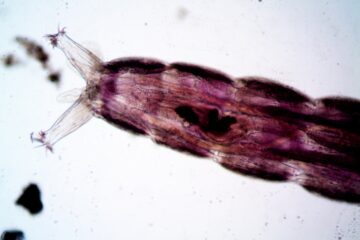![]()
Introduction
DNA fingerprinting is a laboratory method used to establish a person’s likely identification based on the nucleotide sequences of certain sections of human DNA that are unique to people. DNA fingerprinting is used for a number of applications, including criminal investigations, forensic purposes, and paternity testing. In such cases, the goal is to “match” two DNA fingerprints, such as one from a known person and one from an unknown individual. There are several ways for determining if two samples are the same or different. This is also known as DNA fingerprinting. For example, two cloned sections of DNA may be analysed in the lab to see if they share regions and hence overlap. DNA samples can be taken and examined in a different location, such as a crime scene, to discover if they match DNA samples received from suspects in that crime. If two DNA samples have the same fingerprint, they are very certainly from the same person. A similar method can be used to establish paternity.
Forensic genetics is a discipline of genetics that deals with the application of genetic information to legal concerns and judicial processes. Forensic genetics is another discipline of forensic medicine that focuses with the application of medical knowledge to legal issues. DNA is frequently used in forensic genetics nowadays. Even the name “DNA fingerprinting” is reminiscent of past methods of police identification. Forensic genetics is not a new area of study. Long before DNA fingerprinting, blood grouping, HLA typing, and other testing of genetic markers in blood were used to try to figure out who did it (and, more often, who did not do it).
In 1986, police in the United Kingdom asked Dr. Alec J. Jeffreys of the University of Leicester to verify a suspect’s confession that he was responsible for two rape-murders. Tests revealed that the suspect had not committed the crimes. Robert Melias was the first person in the United Kingdom to be convicted using DNA evidence in 1987. In the same year, Tommy Lee Andrews was convicted in a rape case in the United States based on DNA evidence, in which his DNA profile was matched with those of sperm traces obtained from the victim.
Forensic DNA Profiling: Technological Evolution
Radiolabelled DNA probes carrying minisatellite or oligonucleotide sequences are hybridised to DNA that has been digested with a restriction enzyme, separated by agarose electrophoresis, and immobilised on a membrane by Southern blotting or – in the case of oligonucleotide probes – immobilised directly in the dried gel in the traditional DNA fingerprinting approach. The radiolabelled probe binds to a series of minisatellites or oligonucleotide stretches in genomic DNA contained in restriction fragments whose sizes vary due to variations in the amount of repeat units. After rinsing away surplus probe, exposure to X-ray film (autoradiography) allows these varied pieces to be viewed and their profiles compared between people. Minisatellite probes with the numbers 33.6 and 33.15 were most commonly used in the United Kingdom, much of Europe, and the United States, while pentameric (CAC)/(GTG)5 probes were most commonly used in Germany.
Forensic DNA profiling is presently done with a panel of multi-allelic STR markers that are structurally similar to the original minisatellites but have considerably shorter repetition tracts and are thus easier to amplify and multiplex with PCR. A single capillary electrophoresis injection may identify up to 30 STRs, resulting in a unique genetic code for each individual. There are basically two sets of STR markers that conform with the requirements demanded by criminal databases all around the world: the European standard set of 12 STR markers and the US CODIS standard set of 13 markers. Because to partial overlap, they total 18 STR markers.
Forensic Genetics and Crime Scene Investigations
“During the past 15 years, a revolution has taken place within the field of forensic genetics. Today rape, murder, and other serious crimes are often solved by DNA investigations in which DNA profiles obtained from biological traces, such as semen stains from the scene of a crime, match the DNA profile of a suspect or a person in a criminal offender DNA database.”[1]
Forensic genetic analyses are generally used in crime scene investigations to determine if DNA analysis supports the idea that biological material from a trace came from a specific individual, or whether someone with a matching DNA profile can be discovered in a DNA database. In today’s criminal investigations, there is an international agreement to look into repetitive DNA sequences in microsatellite regions, also known as short tandem repeats (STR). Typically, investigations involve enzymatic amplification of STR regions using the polymerase chain reaction (PCR) technique and analysis of the lengths of the STR regions with a DNA sequencer.
DNA databases including DNA profiles derived from unresolved criminal cases and persons are being used in an increasing number of nations. Almost all nations include the seven STRs specified by Interpol in their DNA databases. As a result, DNA profiles may be searched across international borders in the battle against crime.
Situation in India
“In India, the legal position of DNA fingerprinting has mostly remained dicey, surviving among two opposite poles of attaining the truth or respecting individual privacy.”[2]
The Constitution, in Article 51A(h) and (j), imposes a duty on citizens to cultivate scientific temper, humanism, and the spirit of inquiry and reform in order to strive for excellence in individual and collective activity, and thus the parliament can legitimately undertake and promote technical and scientific methods to expedite the criminal justice system, as provided in the union list. Section 9 of the Indian Evidence Act of 1872 deals with “facts essential to explain or introduce a fact in question or relevant fact.” Furthermore, if expert testimony is relevant under section 45, the basis for that view is likewise relevant under section 51. Section 46 deals with facts that influence expert conclusions. On the same basis, an expert’s opinion based on DNA profiling is likewise important. However, the more confusing topic is whether a DNA analysis can be lawfully directed or not. Under exceptional circumstances, such as rape, the CrPC provides in Section 53-A that an accused of rape may be examined by a medical practitioner, which may entail the collection of body material from the accused for DNA fingerprinting.
It is almost difficult to discuss self-incrimination without mentioning the stance stated by the Hon’ble Supreme Court in the case of State of Bombay v. Kathi Kalu Oghad &ors[3]. A court bench of eleven judges ruled:
When an accused individual is called upon by the Court or any other investigating authority to provide his finger impression, signature, or a specimen of his handwriting, he is not providing ‘personal testimony.’ Giving a “personal testimony” must be his choice. He can make any remark he wants or refuse to make any comment at all. However, no amount of dissimulation can affect the basic nature of his finger imprints or handwriting. Thus, while presenting finger imprints, samples writing, or signatures by an accused person may amount to producing evidence in the broad sense, it is not included in the definition of “to be a witness.” Thus, the court established that providing a fingerprint or collecting any other ‘private nature’ evidence does not essentially attract the maxim nemo debet proderese ipsum, i.e., no one can be required to be his own betrayer; the latter would imply that a person has produced knowledge through his own volition that would establish his guilt, whether through undue influence, coercion, or threat or not.
The Indian judicial system now considers DNA fingerprinting as corroborative rather than decisive evidence. The most significant barriers include a lack of sample collection and data storage restrictions, as well as a lack of clarity on the type of information contained in DNA fingerprinting data. Technology also raises concerns about invasions of privacy, dignity, innocence, and health, among other things. It instils fear among our society’s minority. There is disagreement over how long the data will be available and how it may be utilised by individuals in other situations. There have been incidents of data fraud in the nation. In India, approximately 2-3% of court cases use DNA fingerprinting technique.
Conclusion
At the moment, forensic DNA technology has a direct impact on the lives of millions of individuals throughout the world. Reports on the DNA identification of victims of the 9/11 terrorist attacks, natural disasters such as Hurricane Katrina, and recent wars (such as in former Yugoslavia) and dictatorships (such as in Argentina) impress the public in the same way that police investigators in white suits securing DNA evidence at a broken door do. However, the positive viewpoint shifts and critical issues are addressed. The benefits of forensic DNA fingerprinting should not be presumed to outweigh the social and ethical drawbacks.
“The forensic community, as it always has, is facing the question in which direction the DNA Fingerprint technology will be developed.”[4] A rising number of colleagues are persuaded that DNA sequencing will soon replace approaches based on fragment length analysis, and there are compelling justifications for this stance. With the advent of current Next Generation Sequencing (NGS) technology, the body of forensically valuable data may potentially be enlarged and examined swiftly and cost-effectively.
References
[1] Dr Niels Morling, “Forensic Genetics”, The Lancet, Vol. 364 Special Issue, December 2004. URL https://www.thelancet.com/journals/lancet/article/PIIS0140-6736(04)17621-6/fulltext .
[2] Shubham Borkar and Asish Mishra, “India: DNA Profiling in India (Towards the New Age DNA Technology Use and Application Bill, 2018)”, URL https://www.mondaq.com/india/new-technology/782032/dna-profiling-in-india-towards-the-new-age-dna-technology-use-and-application-bill-2018#_ftn1
[3] AIR 1961 SC 1808.
[4] Roewer, L. DNA fingerprinting in forensics: past, present, future. Investig Genet 4, 22 (2013). URL https://doi.org/10.1186/2041-2223-4-22 .



0 Comments